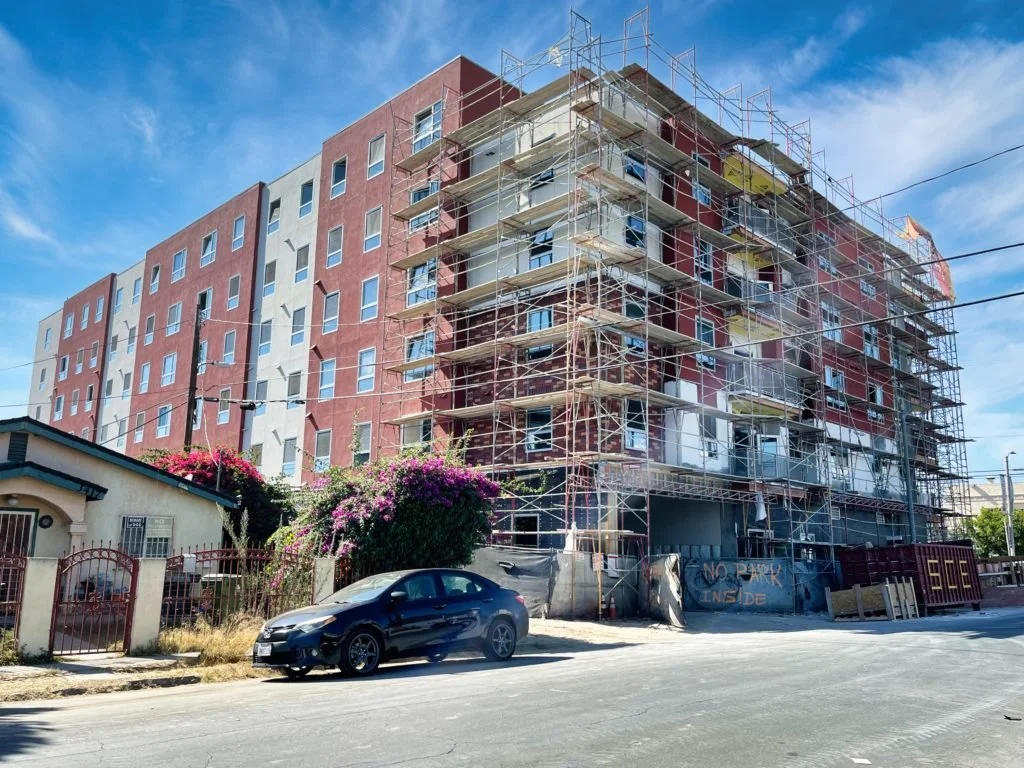🏡💚 How to Protect Tenants While Decarbonizing Homes
October 6th, 2023
In 2022, a diverse coalition of organizations (including the California GND Coalition and many of you) advocated for and won the creation of an Equitable Building Decarbonization program with initial funding of almost $1 billion — $922 million to be exact. This is a direct install program, which means funding will directly provide upgrades for low-income households, rather than requiring residents to pay the upfront costs and receive rebates retroactively.
This is a huge opportunity and a huge undertaking — to our knowledge, this would be the first program of its kind to try to do this at this scale. And as we in the GND Coalition think about a green social housing campaign, we should consider what role this kind of program could have in that vision.
Because outside of the material benefits that this program could have for low-income residents, there’s also a real risk that something like this could significantly exacerbate the housing crisis. For one, building decarbonization measures are by default geared towards benefitting homeowners because of how the incentives align. Since homeowners live in their homes, they stand to gain from building decarb benefits like improved indoor air quality, energy bill savings, improved habitability and comfort, and property value increases that come from installing new and modern technology. Tenants and landlords, on the other hand, face what is called “split incentives,” where the benefits go to the tenants but the landlords are the ones who make the decision. If not designed with tenants in mind, more likely than not a building decarb program will primarily benefit homeowners and exacerbate existing economic disparities.
But it doesn’t stop there. One way landlords try to address the impact of this split incentive is by passing through the costs of building decarb investments to tenants. Or, more perniciously, landlords may try to use these renovations as excuses to evict tenants (known as “renovictions”) and jack up the rents. Even if a program follows a direct install model that doesn’t require upfront costs, landlords may recognize that these improvements increase their property value and their potential to bring in higher rents. So even if a program is able to convince landlords to participate, it may do so at the risk of harming tenants.
That’s why it is so important and timely to see the release of a report just last week written by Chelsea Kirk at Strategic Actions for a Just Economy (SAJE), Decarbonizing California Equitably: A Guide to Tenant Protections in Building Upgrades/Retrofits throughout the State. In addition to going into much greater depth on the background and context of these issues, the report provides a comprehensive guide to the range of tenant protections that should be required in any decarbonization program. This includes both affordability and eviction protections, but also ways to minimize disruption and harassment. This is an amazing resource, and I highly encourage you to check it out.
The report is all the more significant because yesterday the CEC released the final Program Guidelines for the Equitable Building Decarbonization program (which you can find in the docket log here). I’ve only been able to skim through it, and would love to hear what others think. At first glance, though far from perfect, the program made significant improvements to the (very vague) tenant protections that were initially included in the draft guidelines. There are strong limits on rent increases, different considerations for different housing types (e.g. requiring at least 10 more years on the deed recording for deed-restricted properties), eviction protections, required tenant education, and efforts to minimize tenant displacement.
These wins are in large part due to many of you all who worked tirelessly on coordinating and building alignment with a wide set of partners to advocate for stronger protections in the program.
Of course, all of this will ultimately depend on program implementation and enforcement. Many well-intended tenant protection policies fall short because of poor enforcement, and this program will be a test of the CEC’s, and the program administration team’s, ability to deliver on these promises.
All of that remains to be seen in the coming year as the program selects administrator teams and starts to roll out funds. For now, a huge appreciation to everyone who has fought to make that program better, and who plan to see it through this next phase.
Photo from SAJE’s page announcing the release of their report. Read it!
WHAT WE’RE READING
Will the cost of LA’s decarbonization lead to tenant evictions? (CalMatters) — also not to be missed, an op-ed from Chelsea Kirk from 2021 summarizing findings related to LA’s approach to building decarb
Fallen from the middle class: 60, living in an RV and fighting to be housed (LA Times) — moving story published this week about the challenges of finding housing, even for those lucky enough to receive a Section 8 voucher
I’ve sent this out to everyone on the current CA GND listserv. If you don’t want to get these weekly newsletters, feel free to unsubscribe below.
We’ll be back with another newsletter next Friday morning. Please send any relevant topics, articles, reports, or intel to me at zach@apen4ej.org!

